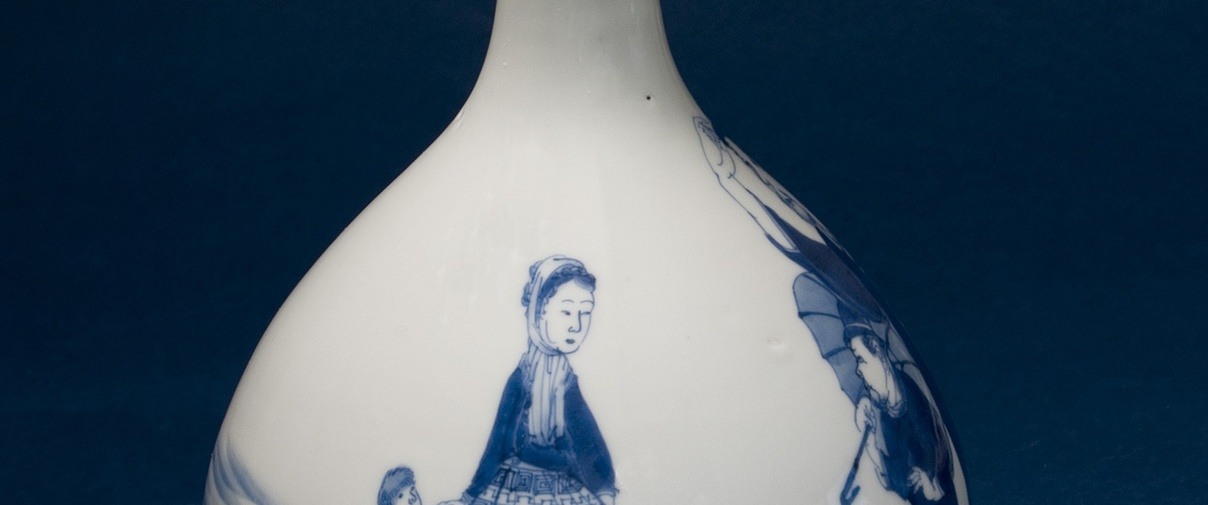Titia on vase
On February 13, 1786, Titia Bergsma was born in Leeuwarden. She would become the first Western woman to visit Japan. Her portrait is depicted on countless Japanese prints and objects. This includes this vase that collector Nanne Ottema bought in 1933 from the East Asian Trading Company. Titia is dressed in a wide, long skirt and a fitted coat with long sleeves. She has a bonnet on her head. The Japanese painter also clearly enjoyed depicting her husband, with a hat and beard. Such an exotic couple was not often seen.
In 1815, Titia married Jan Cock Blomhoff. Blomhoff had recently returned from Japan, where he was warehouse manager in Deshima. This is an artificial island in the Bay of Nagasaki, where the Netherlands is the only Western country to trade with Japan. On 6 March 1816, Titia and Jan had a son, Johannes, and shortly afterwards they left for Batavia. Soon after their arrival, Blomhoff was appointed as chief of Deshima. They decided to make the journey to Japan together, with their young son and their nanny Petronella. This was very unusual: Western women were not allowed in Japan. On 16 July 1817, the governor of Nagasaki nevertheless granted the ladies permission to go ashore, apparently because Titia's son was ill. However, the shogun, the political leader of Japan, refused to grant them a residence permit. Titia, Johannes and Petronella had to return. Titia wrote a petition, but to no avail. On December 4, 1817, Jan Cock Blomhoff is forced to put his wife and child on the ship that will take them back to the Netherlands. He will never see Titia again. She dies in 1821, reportedly of grief.
